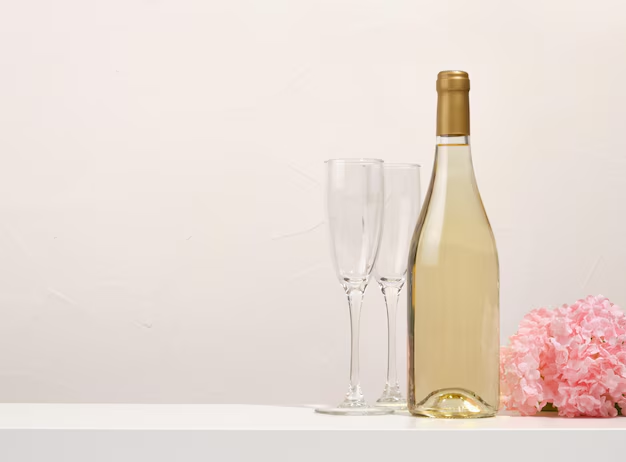How Fresh is Your Chardonnay? A Guide to Storing White Wine in the Refrigerator 🍷
White wine is among the most cherished beverages globally, ideal for everything from a celebratory toast to a quiet evening at home. However, once opened, you might find yourself wondering, "How long is my white wine good in the refrigerator?" This question is crucial for maintaining the quality and taste of your wine. Here, we'll navigate through the ins and outs of storing white wine, ensuring that every sip remains delightful.
Understanding White Wine’s Shelf Life in the Fridge
Unopened vs. Opened Bottles
Unopened White Wine: When stored properly, unopened white wine can last anywhere from 1 to 3 years, depending on the specific type. For example, lighter white wines such as Sauvignon Blanc and Pinot Grigio have a shorter shelf life compared to fuller-bodied ones like Chardonnay.
Opened White Wine: Once opened, white wine has a relatively shorter lifespan due to exposure to air, which initiates oxidation — leading to changes in flavor and aroma. On average, an opened bottle of white wine will remain fresh in the refrigerator for about 3 to 5 days.
Signs Your White Wine Has Gone Bad 🍂
- Off-Colors: Fresh white wine typically has a bright, clear color. If it appears cloudy or darker than usual, it might be a sign that it's no longer good.
- Vinegar Smell: An off-putting vinegar aroma is a telltale sign of wine spoilage due to excessive oxidation.
- Altered Taste: Tasting slightly sour or overly tart indicates that your wine has turned.
Types of White Wine and Their Storage Needs
- Light-bodied whites: These wines, including Sauvignon Blanc and Pinot Grigio, are best consumed within a few days of opening as they are more susceptible to losing their freshness quickly.
- Full-bodied whites: Wines like Chardonnay and Viognier can last slightly longer due to their complexity and structure, though they should still be consumed within a week after opening.
Tips for Storing White Wine in the Refrigerator 🌡️
- Seal It Tight: Use an airtight stopper or wine sealer to minimize air exposure.
- Upright Position: Store bottles upright to reduce the surface area exposed to oxygen, slowing down oxidation.
- Consistent Temperature: Keep your refrigerator at a temperate range of 45–50°F for optimal wine storage.
Creative Use of Leftover White Wine 🍷➡️🍲
If you can't drink a bottle within its prime, don't worry! White wine can still be of value in your kitchen. Here are a few ideas:
- Cooking: Use it in recipes like risotto, gravies, and sauces for an added depth of flavor.
- Marinades: A splash of white wine can elevate the flavors of your marinades for meats or seafood.
- Ice Cubes: Freeze leftover wine in ice cube trays for use in cooking or future cocktail preparations.
Practical Consumer Tips Summary 📋
Here’s a quick breakdown of key takeaways for effective wine storage:
- ⏳ Shelf Life: Unopened (1-3 years), Opened (3-5 days in the refrigerator)
- ❗ Spoilage Signs: Cloudiness, vinegar odor, sour taste
- 🥂 Enjoy Promptly: Best enjoyed shortly after opening, especially for lighter wines
- 🔒 Preserve Freshness: Use airtight seals and store upright
| Action | Reason | Outcome |
|---|---|---|
| Seal carefully | Prevents air ingress | Prolongs freshness |
| Store upright | Reduces oxidized surface area | Delays spoilage |
| Keep temperature | Maintains stable environment | Protects aroma and flavor |
| Use leftovers | Minimizes waste through culinary reuse | Enhances dishes with unique character |
Why Some Wines last Longer than Others
Wine longevity can depend on several factors, including:
- Acidity Levels: Higher acidity acts as a natural preservative.
- Sugar Content: Sweet wines tend to last longer due to sugar's preservative qualities.
- Tannins Presence: Though more common in red wines, some white wines that have skin contact will have tannins that help preserve the wine.
Storing Wine for the Long Term
For wine enthusiasts with a collection, long-term storage becomes much more important. Consider the following for optimal aging:
- Wine Fridges: Specially designed to keep wines at ideal temperatures and humidity levels, ensuring peak quality over time.
- Dark Setting: Store wines in a dark place to prevent UV light from affecting the wine’s compounds.
Building a Reliable Wine Storage Habit 🍇
Establishing a reliable wine storage habit not only helps preserve the quality of your wine but also enhances your drinking experience. Here’s how you can incorporate these habits into your routine:
- Inventory Check: Regularly monitor your wine stock to plan your consumption and minimize waste.
- Taste Tests: If unsure about freshness, a small taste test will give you immediate insight into the wine's state.
- Label Dates: Consider labeling opened wine with the date to track freshness.
Insights for a Better Wine Experience
Remember, while storing wine properly is key to maintaining quality, enjoyment is the ultimate goal. Don’t shy away from experimenting with different styles and vintages, and take pleasure in understanding what storage conditions best enhance your preferred flavors.
Your knowledge of wine storage not only facilitates better enjoyment but also minimizes waste, ultimately fostering a more sustainable relationship with your wine habits. Savor the journey from cork to glass, letting every pour offer a taste of excellence and delight. 🍷
